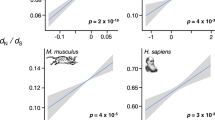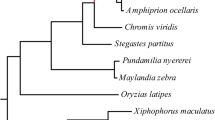Abstract
The genetic basis of the large species differences in longevity and aging remains a mystery. Thanks to recent large-scale genome sequencing efforts, the genomes of multiple species have been sequenced and can be used for cross-species comparisons to study species divergence in longevity. By analyzing proteins under accelerated evolution in several mammalian lineages where maximum lifespan increased, we identified genes and processes that are candidate targets of selection when longevity evolves. We identified several proteins with longevity-specific selection patterns, including COL3A1 that has previously been related to aging and proteins related to DNA damage repair and response such as DDB1 and CAPNS1. Moreover, we found that processes such as lipid metabolism and cholesterol catabolism show such patterns of selection and suggest a link between the evolution of lipid metabolism, cholesterol catabolism, and the evolution of longevity. Lastly, we found evidence that the proteasome–ubiquitin system is under selection specific to lineages where longevity increased and suggest that its selection had a role in the evolution of longevity. These results provide evidence that natural selection acts on species when longevity evolves, give insights into adaptive genetic changes associated with the evolution of longevity in mammals, and provide evidence that at least some repair systems are selected for when longevity increases.

Similar content being viewed by others
References
Aledo JC, Li Y, de Magalhães JP, Ruíz-Camacho M, Pérez-Claros JA (2011) Mitochondrially encoded methionine is inversely related to longevity in mammals. Aging Cell 10:198–207
Alekseev S, Kool H, Rebel H, Fousteri M, Moser J, Backendorf C, de Gruijl FR, Vrieling H, Mullenders LH (2005) Enhanced DDB2 expression protects mice from carcinogenic effects of chronic UV-B irradiation. Cancer Res 65:10298–10306
Arcaro A, Zvelebil MJ, Wallasch C, Ullrich A, Waterfield MD, Domin J (2000) Class II phosphoinositide 3-kinases are downstream targets of activated polypeptide growth factor receptors. Mol Cel Bio 20:3817–3830
Ashburner M, Ball CA, Blake JA, Botstein D, Butler H, Cherry JM, Davis AP, Dolinski K, Dwight SS, Eppig JT, Harris MA, Hill DP, Issel-Tarver L, Kasarskis A, Lewis S, Matese JC, Richardson JE, Ringwald M, Rubin GM, Sherlock G (2000) Gene ontology: tool for the unification of biology. The Gene Ontology Consortium. Nat Genet 25:25–29
Austad SN (2005) Diverse aging rates in metazoans: targets for functional genomics. Mech Ageing Dev 126:43–49
Austad SN (2009) Comparative biology of aging. J Gerontol A Biol Sci Med Sci 64:199–201
Brégégère F, Milner Y, Friguet B (2006) The ubiquitin–proteasome system at the crossroads of stress-response and ageing pathways: a handle for skin care? Ageing Res Rev 5:60–90
Cutler RG (1979) Evolution of human longevity: a critical overview. Mech Ageing Dev 9:337–354
de Magalhães JP, Church GM (2007) Analyses of human–chimpanzee orthologous gene pairs to explore evolutionary hypotheses of aging. Mech Ageing Dev 128:355–364
de Magalhães JP, Costa J (2009) A database of vertebrate longevity records and their relation to other life-history traits. J Evol Biol 22:1770–1774
de Magalhães JP, Toussaint O (2002) The evolution of mammalian aging. Exp Gerontol 37:769–775
de Magalhães JP, Costa J, Church GM (2007) An analysis of the relationship between metabolism, developmental schedules and longevity using phylogenetic independent contrasts. J Gerontol A Biol Sci Med Sci 62:149–160
de Magalhães JP, Budovsky A, Lehmann G, Costa J, Li Y, Fraifeld V, Chuch GM (2009a) The Human Ageing Genomic Resources: online databases and tools for biogerontologists. Aging Cell 8:65–72
de Magalhães JP, Curado J, Chuch GM (2009b) Meta-analysis of age-related gene expression profiles identifies common signatures of aging. Bioinformatics 25:875–881
Demarchi F, Schneider C (2007) The calpain system as a modulator of stress/damage response. Cell Cycle 6:136–138
Didichenko SA, Fragoso CM, Thelen M (2003) Mitotic and stress-induced phosphorylation of HsPI3K-C2alpha targets the protein for degradation. J Biol Chem 278:26055–26064
Edwards RJ, Shields DC (2004) GASP: Gapped Ancestral Sequence Prediction for proteins. BMC Bioinformatics 5:123
Finch CE (1990) Longevity, senescence, and the genome. University of Chicago Press, Chicago
Finch CE, Stanford CB (2004) Meat-adaptive genes and the evolution of slower aging in humans. Q Rev Biol 79:3–50
Freitas AA, de Magalhães JP (2011) A review and appraisal of the DNA damage theory of ageing. Mutat Res 728:12–22
Gourlay CW, Ayscough KR (2005) The actin cytoskeleton: a key regulator of apoptosis and ageing? Nat Rev Mol Cell Biol 6:583–589
Grantham R (1974) Amino acid difference formula to help explain protein evolution. Science 185:862–864
Groisman R, Polanowska J, Kuraoka I, Sawada J, Saijo M, Drapkin R, Kisselev AF, Tanaka K, Nakatani Y (2003) The ubiquitin ligase activity in the DDB2 and CSA complexes is differentially regulated by the COP9 signalosome in response to DNA damage. Cell 113:357–367
Harper JM, Salmon AB, Leiser SF, Galecki AT, Miller RA (2007) Skin-derived fibroblasts from long-lived species are resistant to some, but not all, lethal stresses and to the mitochondrial inhibitor rotenone. Aging Cell 6:1–13
Hart RW, Setlow RB (1974) Correlation between deoxyribonucleic acid excision-repair and life-span in a number of mammalian species. Proc Natl Acad Sci USA 71:2169–2173
Hulbert AJ (2008) Explaining longevity of different animals: is membrane fatty acid composition the missing link? Age (Dordr) 30:89–97
Jobson RW, Nabholz B, Galtier N (2010) An evolutionary genome scan for longevity-related natural selection in mammals. Mol Biol Evol 27:840–847
Kapetanaki MG, Guerrero-Santoro J, Bisi DC, Hsieh CL, Rapic-Otrin V, Levine AS (2006) The DDB1-CUL4ADDB2 ubiquitin ligase is deficient in xeroderma pigmentosum group E and targets histone H2A at UV-damaged DNA sites. Proc Natl Acad Sci USA 103:2588–2593
Kim EB, Fang X, Fushan AA, Huang Z, Lobanov AV, Han L, Marino SM, Sun X, Turanov AA, Yang P, Yim SH, Zhao X, Kasaikina MV, Stoletzki N, Peng C, Polak P, Xiong Z, Kiezun A, Zhu Y, Chen Y, Kryukov GV, Zhang Q, Peshkin L, Yang L, Bronson RT, Buffenstein R, Wang B, Han C, Li Q, Chen L, Zhao W, Sunyaev SR, Park TJ, Zhang G, Wang J, Gladyshev VN (2011) Genome sequencing reveals insights into physiology and longevity of the naked mole rat. Nature 479:223–227
Kirkwood TB, Austad SN (2000) Why do we age? Nature 408:233–238
Kua C-H (2006) Uncoupling the relationship between fatty acids and longevity. IUBMB Life 58:153–155
Li J, Wang Q-E, Zhu Q, El-Mahdy MA, Wani G, Praetorius-Ibba M, Wani AA (2006) DNA damage binding protein component DDB1 participates in nucleotide excision repair through DDB2 DNA-binding and cullin 4A ubiquitin ligase activity. Cancer Res 66:8590–8597
Li L, Ye H, Guo H, Yin Y (2010) Arabidopsis IWS1 interacts with transcription factor BES1 and is involved in plant steroid hormone brassinosteroid regulated gene expression. Proc Natl Acad Sci USA 107:3918–3923
Matsuoka S, Ballif BA, Smogorzewska A, McDonald ER, Hurov KE, Luo J, Bakalarski CE, Zhao Z, Solimini N, Lerenthal Y, Shiloh Y, Gygi SP, Elledge SJ (2007) ATM and ATR substrate analysis reveals extensive protein networks responsive to DNA damage. Science 316:1160–1166
Miller RA (2001) A position paper on longevity genes. Sci Aging Knowledge Environ 2001:vp6
Nishitani H, Sugimoto N, Roukos V, Nakanishi Y, Saijo M, Obuse C, Tsurimoto T, Nakayama KI, Nakayama K, Fujita M, Lygerou Z, Nishimoto T (2006) Two E3 ubiquitin ligases, SCF-Skp2 and DDB1-Cul4 target human Cdt1 for proteolysis. EMBO J 25:1126–1136
Pérez VI, Buffenstein R, Masamsetti V, Leonard S, Salmon AB, Mele J, Andziak B, Yang T, Edrey Y, Friguet B, Ward W, Richardson A, Chaudhuri A (2009) Protein stability and resistance to oxidative stress are determinants of longevity in the longest-living rodent the naked mole-rat. Proc Natl Acad Sci USA 106:3059–3064
Ricklefs RE (2010) Life-history connections to rates of aging in terrestrial vertebrates. Proc Natl Acad Sci USA 107:10314–10319
Salmon AB, Leonard S, Masamsetti V, Pierce A, Podlutsky AJ, Podlutskaya N, Richardson A, Austad SN, Chaudhuri AR (2009) The long lifespan of two bat species is correlated with resistance to protein oxidation and enhanced protein homeostasis. FASEB J 23:2317–2326
Samuelson AV, Carr CE, Ruvkun G (2007) Gene activities that mediate increased life span of C. elegans insulin-like signaling mutants. Genes Dev 21:2976–2994
Sjögren C, Nasmyth K (2001) Sister chromatid cohesion is required for postreplicative double-strand break repair in Saccharomyces cerevisiae. Curr Biol 11:991–995
Terashima Y, Onai N, Murai M, Enomoto M, Poonpiriya V, Hamada T, Motomura K, Suwa M, Ezaki T, Haga T, Kanegasaki S, Matsushima K (2005) Pivotal function for cytoplasmic protein FROUNT in CCR2-mediated monocyte chemotaxis. Nat Immunol 6:827–835
Weidenheim KM, Dickson DW, Rapin I (2009) Neuropathology of Cockayne syndrome: evidence for impaired development, premature aging and neurodegeneration. Mech Ageing Dev 130:619–636
Wu CH, Apweiler R, Bairoch A, Natale DA, Barker WC, Boeckmann B, Ferro S, Gasteiger E, Huang H, Lopez R, Magrane M, Martin MJ, Mazumder R, O’Donovan C, Redaschi N, Suzek B (2006) The Universal Protein Resource (UniProt): an expanding universe of protein information. Nucleic Acids Res 34:D187–D191
Wyse CA, Coogan AN, Selman C, Hazlerigg DG, Speakman JR (2010) Association between mammalian lifespan and circadian free-running period: the circadian resonance hypothesis revisited. Biol Lett 6:696–698
Zhang W, Chen T, Wan T, He L, Li N, Yuan Z, Cao X (2000) Cloning of DPK a novel dendritic cell-derived protein kinase activating the ERK1/ERK2 and JNK/SAPK pathways. Biochem Biophys Res Commun 274:872–879
Zhang J, Webb DM, Podlaha O (2002) Accelerated protein evolution and origins of human-specific features: Foxp2 as an example. Genetics 162:1825–1835
Acknowledgments
YL was supported by a Postgraduate Scholarship from the Natural Sciences and Engineering Research Council of Canada. JPM thanks the BBSRC (BB/G024774/1 & BB/H008497/1), the Ellison Medical Foundation, and a Marie Curie International Reintegration Grant within EC-FP7 for supporting work in his lab.
Author information
Authors and Affiliations
Corresponding author
About this article
Cite this article
Li, Y., de Magalhães, J.P. Accelerated protein evolution analysis reveals genes and pathways associated with the evolution of mammalian longevity. AGE 35, 301–314 (2013). https://doi.org/10.1007/s11357-011-9361-y
Received:
Accepted:
Published:
Issue Date:
DOI: https://doi.org/10.1007/s11357-011-9361-y




